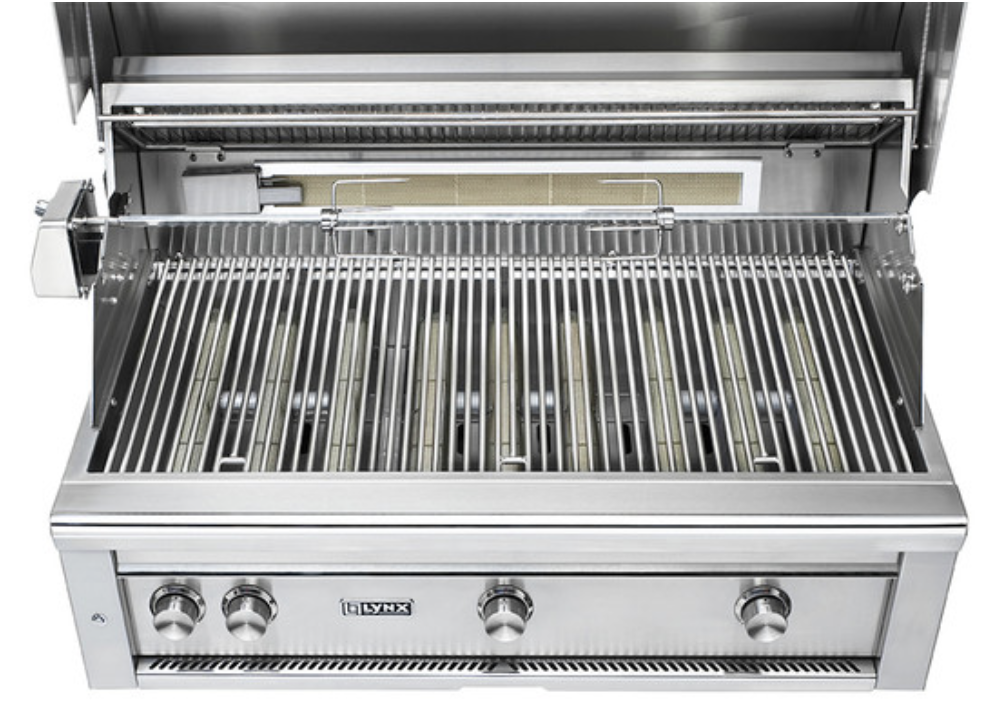Infrared Grills Explained: What They Are and Why You Might Want One
When it comes to outdoor cooking, the debate between an infrared grill vs. a gas grill is a hot topic. While traditional gas grills have been a staple for many, infrared grills are gaining popularity for their efficiency and quality. If you're wondering how an infrared grilling works, what are the best infrared grills or whether it's the right choice for you, this guide breaks down all the information you need before making your final decision.
What is An Infrared Grill and How Do They Work?
Infrared grills use a specialized infrared burner—typically a ceramic or metal plate placed between the flame and the cooking grate—that absorbs heat and emits infrared radiation to cook food directly. Unlike traditional grills that rely on convection heat (hot air), infrared grills utilize radiant heat, resulting in intense, even heat distribution with minimal heat loss. This direct heat transfer allows for faster cooking, higher temperatures ideal for searing, and more precise control over the cooking process. This is why this type of cooking is popular among steakhouse restaurants because it enables chefs and home cooks alike to achieve precise results without the usual guesswork associated with traditional grilling methods.
Infrared Grills vs. Traditional Gas Grills
When comparing infrared grills to traditional gas grills, there are several key differences to consider:
Infrared Grills
- Heat Distribution: Infrared grills offer more even heat distribution, reducing the risk of flare-ups. This ensures that the food is cooked uniformly, enhancing both flavor and texture.
- Heat Up & Cooking Speed: Infrared grills have the ability to heat up in just 3-5 minutes and cook food quicker than gas grills.
- Temperature Range: Infrared grills can reach higher temperatures, making them ideal for searing. The ability to quickly reach and maintain high temperatures results in meats being perfectly caramelized on the outside, while remaining juicy and tender on the inside.
- Moisture Retention: Infrared radiation helps seal in the juices, preventing them from evaporating during the cooking process. Since less moisture is lost during the cooking process, your food will retain 35% more natural juices, making them more tender and flavor packed.
Traditional Gas Grills
- Heat Distribution: Burners in traditional gas grills radiate heat through a heat distribution system (ceramic briquettes, heat shields, etc) to evenly distribute heat across grilling the area. However, when fat or grease drippings fall onto the heat source and catch fire, you run the risk of flare-ups which can affect the taste of your food and cause uneven cooking.
- Heat Up & Cooking Speed: It can take traditional gas grills around 15-20 minutes to heat up. Compared to infrared grills, it will take longer to reach higher temperatures and take more time to grill your food.
- Temperature Range: Traditional gas grills offer a versatile temperature range and are great for low and slow cooking, everyday use or roasting. However, they do not reach temperatures as high or as quickly as infrared grills.
- Moisture Retention: Traditional gas grills cook your food by heating the air around it. Unfortunately, as the hot, dry air circulates your food, it pulls moisture out.
Meeting in the Middle – Hybrid Grills
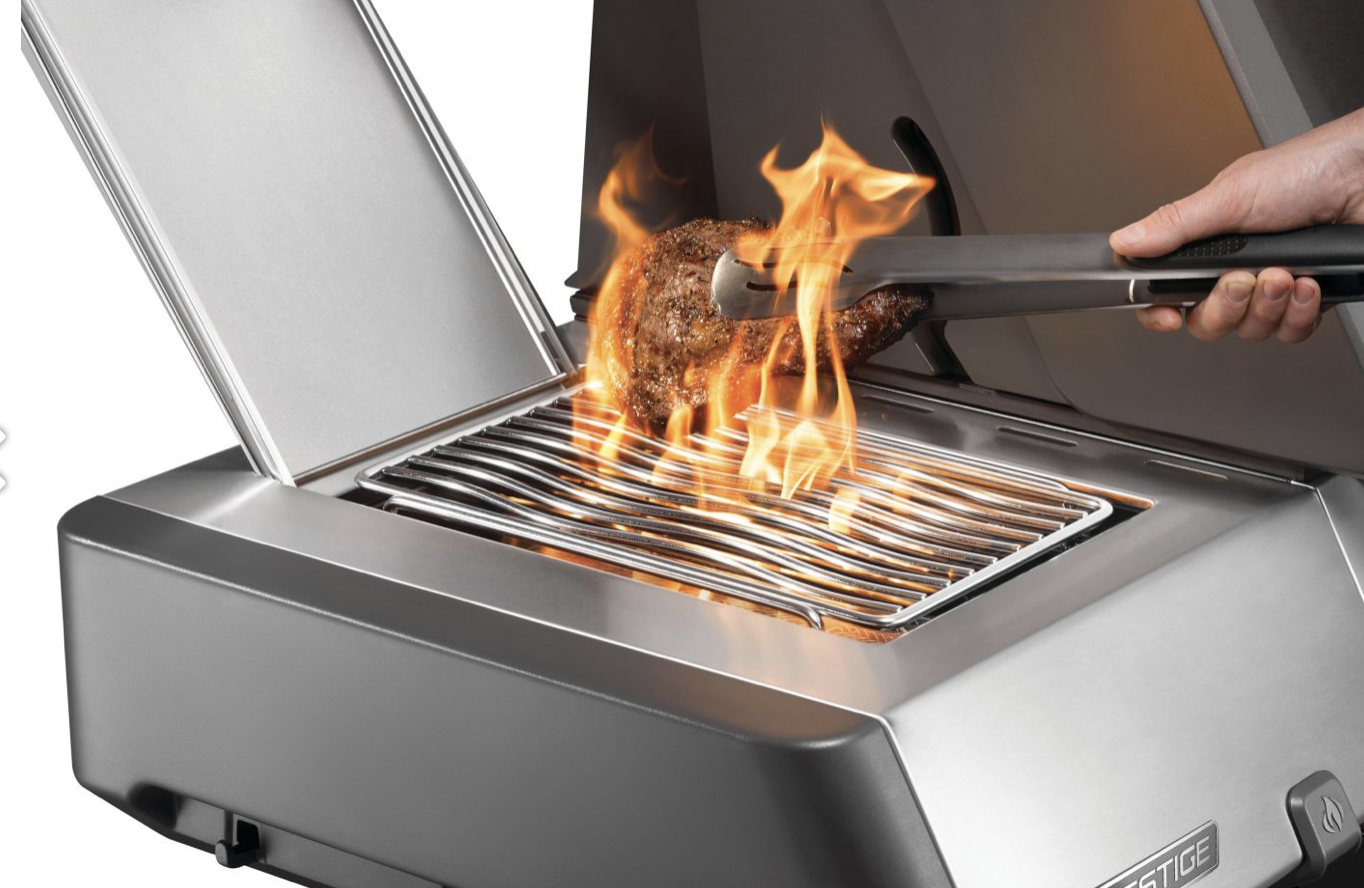

Increasing in popularity are Hybrid Grills. Hybrid grills use both infrared and open flame (convection or blue flame) burners, offering you the best of both worlds. For example, you can sear steak on one side of the grill using infrared heat from your sear zone and grill food that requires a lower temperature on the other sure using your open flame.
There are many different combinations and brands on the market. If you want both of the benefits of infrared grilling and traditional grilling, these are some of our top picks:
- Lynx Professional Series 36 in Built-In Grill with Trident
- Sedona by Lynx L500PSR 30" Built-in Grill w ProSear
- Alfresco ALXE 30" Built-in Grill with Sear Zone
The three types of hybrid grills are a fixed infrared, an interchangeable infrared and a sear station side burner.
A fixed infrared: Contain open flame main burners and one infrared burner that comes permanently mounted inside the grill that cannot be switched out later for an open flame burner. Brands like Alfresco and Lynx that do not allow the infrared burner to be changed with an open flame burner.
*We suggest adding the sear (infrared) burners to larger grills (42” and up) so you do not lose open flame grilling space.
An interchangeable infrared: Grills with all main open flame burners but can be interchanged with an infrared burner that is sold separately and can be switched out at any time. Twin Eagles, Artisan and Delta Heat allow you to interchange the convection burners with infrared and vice versa. They are giving you the widest range of grilling temperatures and are great for those who want more grilling versatility.
A sear station side burner: Some freestanding carts give you the option to replace one of your side shelves with a sear station infrared side burner. This is the best option in our opinion for those who don't want to lose open flame grilling space.
Pros and Cons of Infrared Grilling
There are several benefits to infrared grilling, making them a popular choice for many grilling enthusiasts. These benefits not only enhance the cooking experience but also improve the overall quality of the dishes. While infrared grills offer numerous benefits, they may not be the perfect choice for everyone. Here are some pros and cons to consider:
Pros:
- Fast Cooking: Infrared grills heat up quickly and cook food faster than traditional grills.
- High Temperatures: They can reach high temperatures which allows you to sear meats to perfection while retaining moisture. This helps lock flavor and juices and adds a depth of flavor that is harder to achieve in most traditional gas grills.
- Even Heat Distribution: Even heat distribution means there are fewer hot spots, less chance of flare-ups and more consistent cooking. This not only ensures that food is cooked evenly but leads to a safer and more controlled grilling experience.
- Versatility: The ability to maintain consistent temperatures means infrared grills can handle delicate foods that require precise cooking, like fish and shellfish.
- Energy Efficiency: Because less heat is lost during the cooking process, infrared grilling uses less fuel consumption, making it an environmentally friendly option.
Cons:
- Learning Curve: Infrared grilling may require some adjusting to for those used to grilling on traditional grills. The high heat and rapid cooking times can be challenging for those unfamiliar with this style of cooking.
- Cost: They can be more expensive than traditional gas grills. The advanced technology and materials used in infrared grills often come with a higher price tag. Something to consider if you're not trying to break the bank.
- Limited Low-Temperature Cooking: While infrared grilling offers high, intense heat that is great for searing, some models may struggle to reach lower temperatures for everyday cooking.
Infrared Grill Maintenance
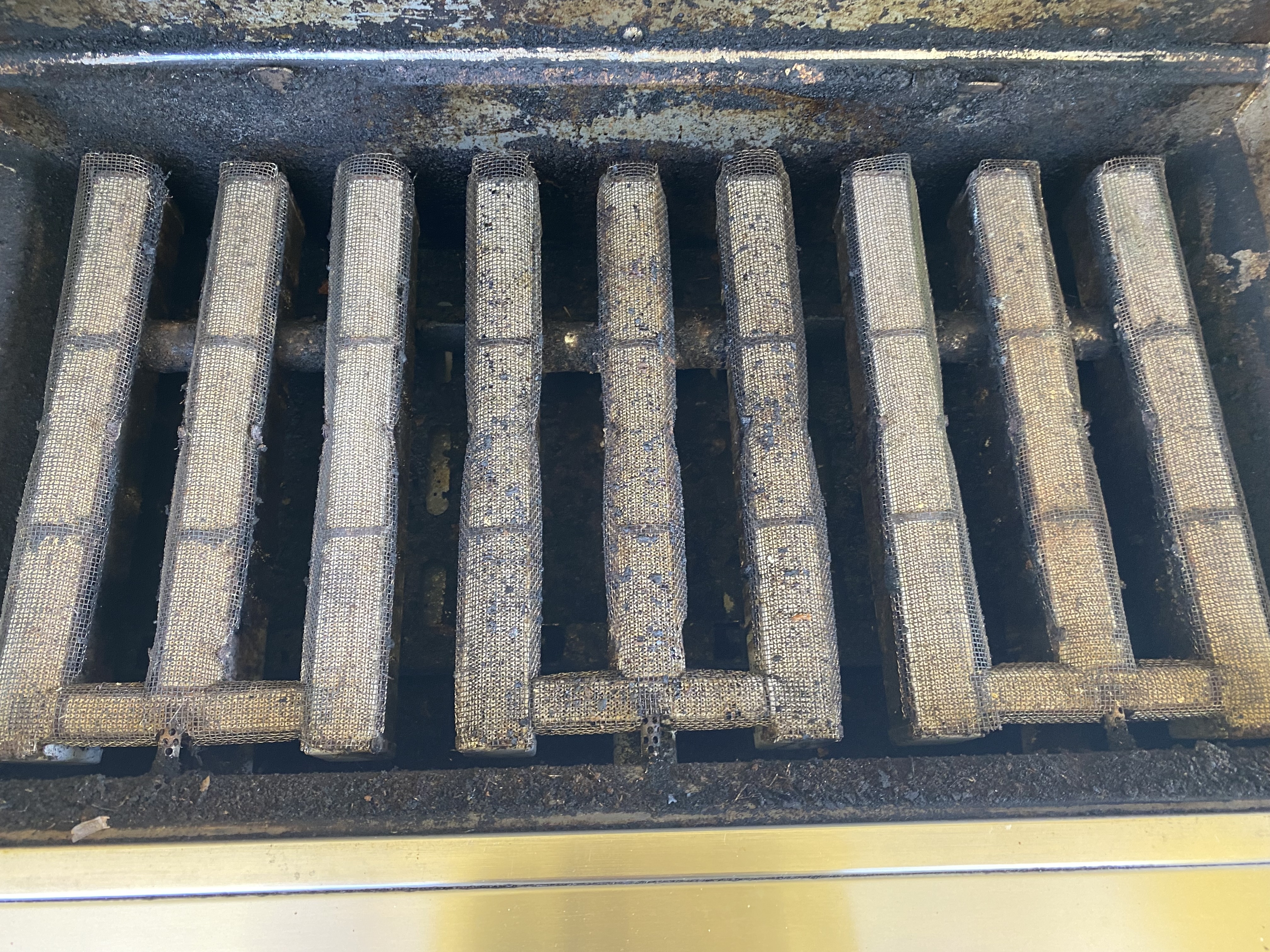
It's important to run routine cleaning and maintenance to ensure your infrared grill performs at its best. Here are some tips to keep your grill in top shape, to help extend the life of your grill and maintain its performance.
How To Clean An Infrared Burner
Infrared burners have a self cleaning ability. Simply turn up the heat to high for about five minutes when you're finished grilling. The high heat will help burn off any remaining food residue.
- Ceramic burners: It's important you do not scrub or soak the burner because the surface is fragile. Use a soft-bristle brush or a vacuum to gently remove debris and if you must wipe it, use a dry microfiber cloth only. Avoid moisture to prevent cracking when reheated.
- Stainless or mesh burners: Clean with warm water and a mild soap using a non-abrasive sponge (no steel wool or harsh scrubbing pads). Make sure to rinse thoroughly and dry completely before reinstalling.
Maintenance Tips
Before and After Grilling:
- Burn off food residue after use to clean the burner.
- Brush your cooking grates.
- Empty drip tray.
Monthly:
- Vacuum or brush the burner surface.
- Inspect burner for clogged burner ports or cracks.
- Clean the firebox using a scraper and soapy water, drying thoroughly to avoid corrosion.
- Wipe or brush off any debris from heat shields or ceramic briquettes.
What Not to Do:
- Don’t pour water on hot ceramic burners (they can crack).
- Don’t use aluminum foil over burners—it blocks infrared heat and can damage the grill.
- Avoid harsh oven cleaners or abrasive chemicals.
Regular inspections, cleanings and maintenance will ensure that your grill remains in optimal condition, ready for use whenever you are.
Best Infrared Grills
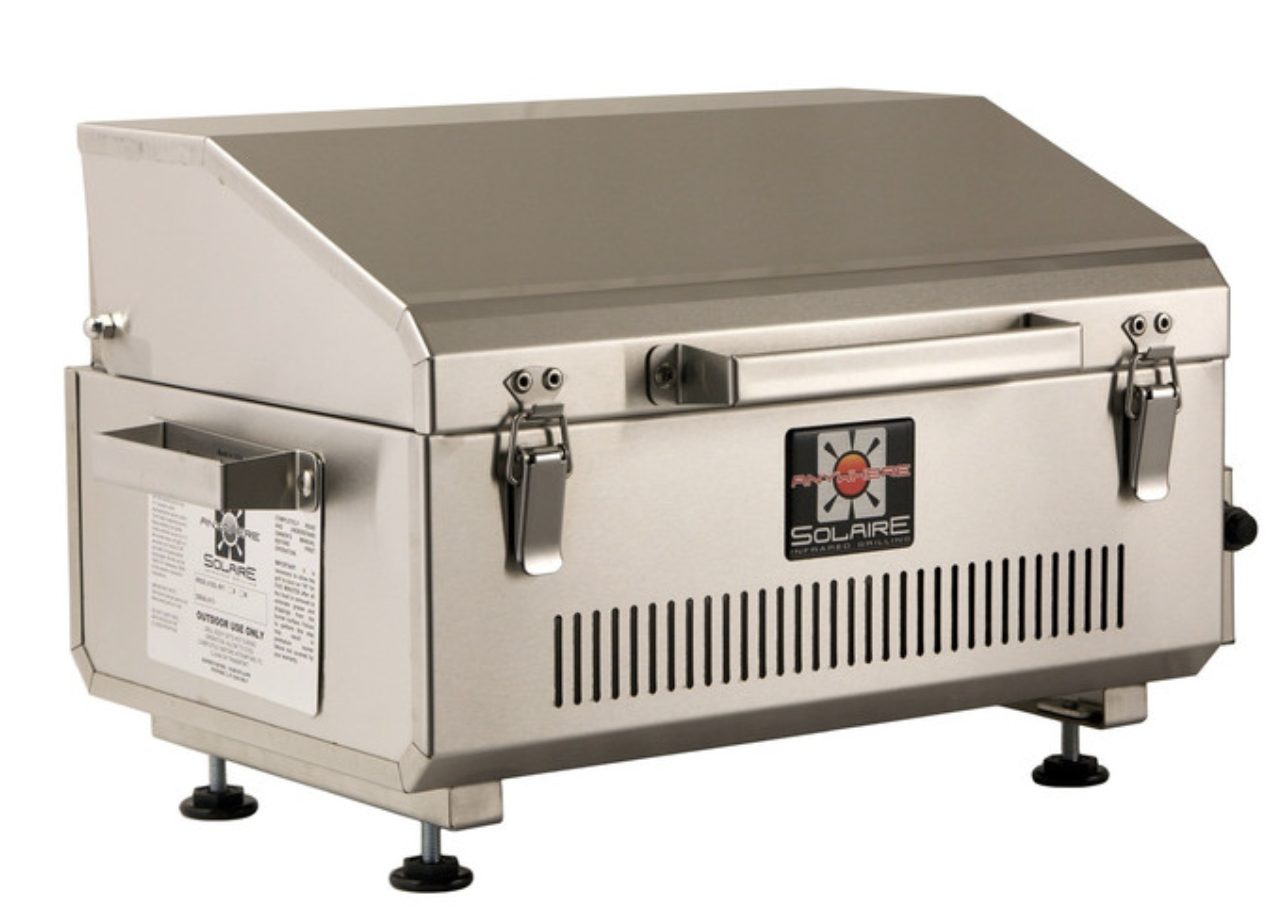
Best Affordable Option: Solaire Anywhere Infrared Portable Grill

Best High-End Model: Lynx 36" All Trident Built In Grill
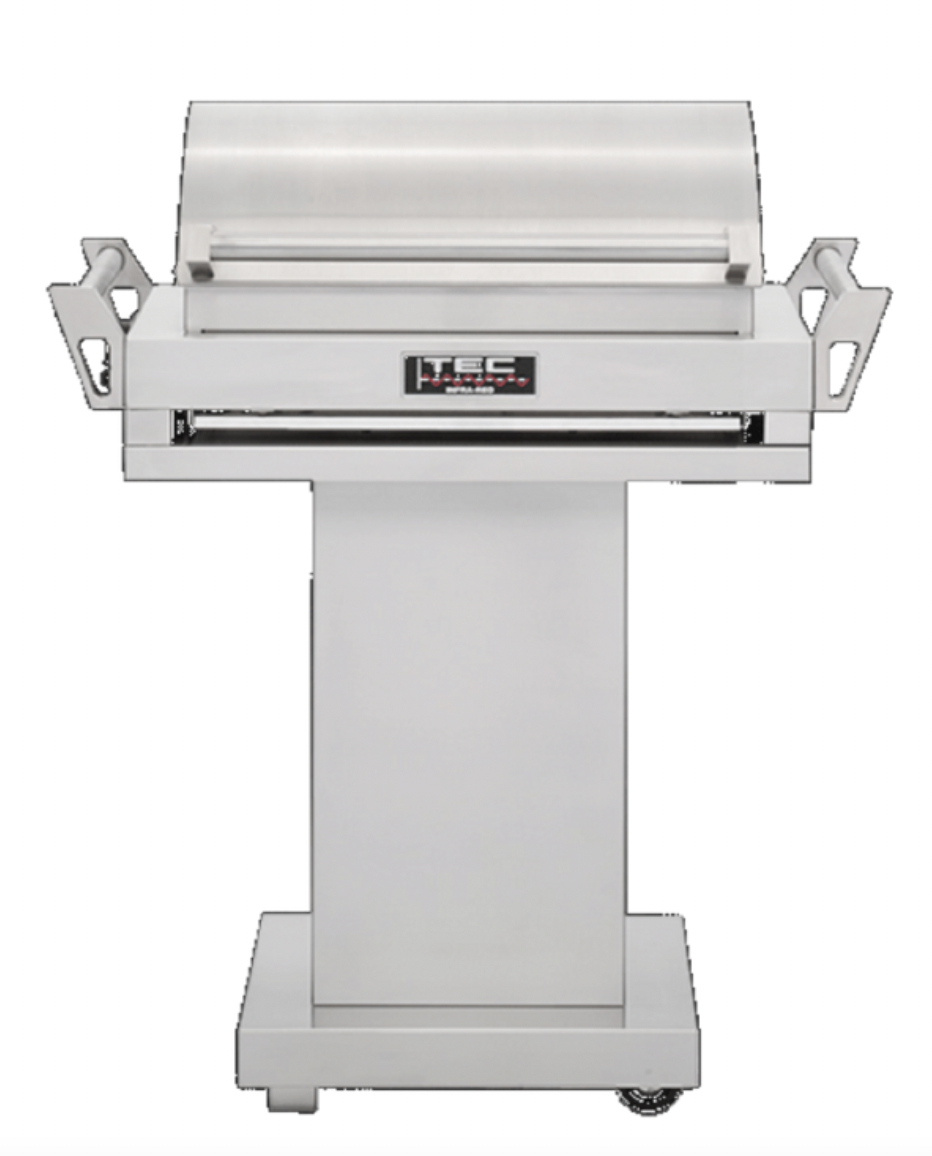
Best Overall: TEC Infrared Grill | G-Sport FR 36" with Stainless Pedestal & Warming Rack
Shop our wide variety of infrared grills
Infrared Grill Cooking Tips
To get the most out of your infrared grill, consider these cooking tips. These strategies will help you maximize the potential of your grill, providing delicious results every time.
Preheating
You want to preheat both your infrared and open flame burners. Your infrared burner will heat up quickly and will take about 3-5 minutes to reach the optimal temperature for searing. You can cook your food entirely on an infrared burner, but after searing, you may want to move the meat to the open flame (lower heat) burner or cooler part of the grill to finish cooking. This will help you reach the desired internal temperature without overcooking the outside and keep the beautiful crust on your meat.
Keep Cooking Speed in Mind
Remember that infrared grills will cook your food much faster than traditional gas grills. Using a meat thermometer is crucial to make sure your meat reaches the right internal temperature and avoid overcooking.
Experiment with Different Foods
Infrared grills are not just for meats. Try grilling fruits, vegetables, and even pizzas to explore the full range of possibilities.
Conclusion
If you've tried gas, charcoal, and pellet grills, an infrared or hybrid grill could be the perfect way to elevate your grilling game. With their ability to reach high temperatures quickly, distribute heat evenly, and exceptional searing capabilities, it's worth the investment for anyone looking to take their cooking to the next level. Whether you're a gourmet chef or a BBQ enthusiast, an infrared grill is the perfect addition to your outdoor kitchen for a whole new grilling experience. With the right grill and a little practice, you’ll be impressing friends and family with restaurant-quality meals right in your own backyard.
If you're still unsure if an infrared grill is right for you, which option to choose or want to know more about different brands, we're here to help! At The BBQ Depot, we want to help you find exactly what you are looking for and answer any concerns or questions you may have. Contact us to speak with one of our experts today.
FAQ:
- Are infrared grills better than gas grills? While both have their pros and cons, there are many benefits of infrared grills that make them more desirable. If you want a grill that will heat up and cook quickly, provide even heat distribution and less flare ups, and has superior searing capabilities, an infrared grill may be the better option for you. However, all infrared grills are more expensive and trickier when it comes to low temperature cooking unless the grill includes adjustable temperature controls or hybrid burners. It really comes down to what you’re looking for, but if you are on a stricter budget, it is definitely worth exploring adding an infrared burner into your built-in grill (if possible) or opting for a hybrid grill to reap the amazing benefits of infrared grilling.
- Are infrared grills easy to clean and maintain? Due to infrared burners having self-cleaning capabilities, they are easier to clean and stainless steel U-burners. When it comes to maintenance, performing inspections monthly and checking for wear and damage will help keep your infrared grill performing at its best.
- Can I turn my gas grill to infrared? Some grill models allow for the addition of infrared burners or sear zones, interchanging your main burner with an infrared burner.. However, not all grill brands do. It's essential to consult your grill's manufacturer or user manual to determine if conversion kits are available for your specific model.

